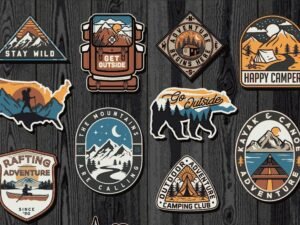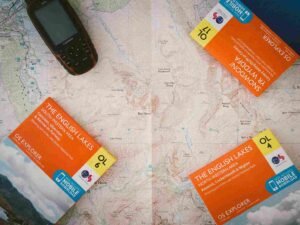When it comes to paddling through serene lakes or navigating river rapids, the age-old debate of canoe vs kayak often surfaces among enthusiasts. Comprehending the key differences, such as hull design and cockpit, between a kayak and canoe is vital for anyone looking to participate in water sports like kayaking, or just looking for a peaceful day on the water. In this blog post, we’ll explore the key distinctions between canoes and kayaks, discuss their respective advantages for activities like fishing, and provide insights into choosing the right one based on stability, speed, and the number of paddlers.
What is the Difference Between a Canoe and a Kayak?
The key difference between a kayak and a canoe lies in their design and the contrasting paddling techniques that they demand. Canoes are generally open on top and tend to be larger, allowing for more cargo space and the ability to move more freely inside the boat. Paddlers use a single-bladed paddle and typically kneel or sit on an elevated bench. Kayaks, on the other hand, usually have a closed deck and are paddled from a seated position with a double-bladed paddle. This kayak design offers better protection against water, making it a preferred choice for activities in rougher water conditions, such as whitewater kayaking.
Also don`t forget that there is sit-on-top kayaks.
A sit-on-top kayak offers a stable, user-friendly experience, ideal for beginners and recreational paddlers. Unlike traditional kayaks, it has an open deck, allowing easy entry and exit. Its self-draining design prevents water pooling, enhancing safety. These kayaks are perfect for warm climates and leisurely paddles, providing a comfortable, relaxed ride. With ample storage and accessory mounts, they’re also favored for fishing and exploring. Their buoyant, durable construction ensures lasting outdoor adventures.
Canoe vs Kayak for Fishing and Tandem Adventures
When it comes to fishing and choosing between a canoe or a kayak, the debate of canoe vs kayak fishing comes into play. Canoes offer more open deck space, making them suitable for longer kayak and canoe mixed fishing trips where you might need more gear. The open deck design of a canoe also allows for standing up, a significant advantage when casting lines or reeling in a big catch during a kayaking and canoeing fishing adventure. Conversely, kayaks, especially fishing-specific models, provide excellent stability and maneuverability, which is crucial when navigating through tight spots or in choppy water.
For those who prefer company, understanding what a tandem kayak is becomes essential. A tandem kayak is designed to accommodate two paddlers, allowing for shared effort and increased speed. However, coordinating strokes is key to effectively navigating in a tandem kayak while kayaking. When comparing canoe vs tandem kayak, canoes generally offer more space and flexibility in seating arrangements, which can be particularly advantageous on longer trips or when paddling with children or pets.
Solo Canoe vs Kayak: Stability, Speed, and Personal Preferences
Choosing between a solo canoe vs kayak often comes down to personal preference and the specific conditions of your paddling environment. Kayak vs canoe stability and the propensity to capsize is a frequent concern, especially for beginners deciding between a canoe or a kayak. Generally, kayaks are perceived to be more stable due to their lower center of gravity and the paddler’s seated position. However, modern canoes, much like a sea kayak, are also designed with stability in mind and can be an excellent choice for calm waters.
In terms of speed, the canoe vs kayak speed debate usually sees kayaks coming out ahead, particularly in rough waters or over long distances. Kayaks, and particularly touring kayaks, tend to be sleeker and more hydrodynamic than canoes, which can result in faster travel times.
Choosing the Right Kayak or Canoe: Size, Length, and Paddles
When deciding between a one-person canoe vs kayak or even a single-person canoe vs kayak, it’s essential to consider the length and size of the watercraft. So, you may ask, how long is a sea kayak, and what length kayak do I need for my kayaking adventure? Generally, longer kayaks offer better speed and tracking, while shorter ones are more agile. For canoes, length might also indicate the volume of cargo space along with the watercraft’s stability in various water conditions – key differences between canoeing and kayaking.
The question of how to get in a kayak safely is also crucial, especially for beginners. Proper technique involves maintaining balance and smoothly entering the kayak from a dock or the shoreline.
Ultimately, ascertaining that you have the right equipment such as an appropriately sized kayak paddle, is vital in understanding whether you need a canoe or kayak. The question of what size kayak paddle do I need and what size kayak do I need can be answered by considering your height, the width of the watercraft, and your paddling style. A paddle that’s too long or too short can lead to discomfort or inefficient paddling, a vital element to keep in mind when kayaking.
Here`s some key points :
- Assess Your Needs:
- Define your primary activities (e.g., fishing, touring, white-water) and the typical water conditions you’ll face (calm lakes, flowing rivers, open seas).
- Consider the Kayak/Canoe Size:
- Account for your body size and weight to ensure stability and comfort.
- Remember, larger vessels offer more storage and are generally more stable, but they can be less agile.
- Select the Appropriate Length:
- Opt for longer kayaks or canoes if you prioritize speed and straight tracking, ideal for long-distance touring.
- Choose shorter models for better maneuverability in tight spaces, suitable for river or recreational use.
- Evaluate the Width (Beam):
- Wider models enhance stability, perfect for beginners, fishing, or photography.
- Narrower options improve speed and are typically favored by experienced paddlers.
- Analyze Hull Design:
- Flat-bottomed hulls ensure stability on calm waters, great for beginners or casual paddling.
- V-shaped or rounded hulls provide better speed and handle rough waters well, suited for advanced paddlers.
- Material Matters:
- Polyethylene plastic is durable and affordable, making it ideal for beginners or rough use.
- Fiberglass or Kevlar models are lighter and faster but require a bigger investment and careful handling.
- Paddle Wisely:
- The right paddle length is influenced by your height, the width of the boat, and your paddling style. Incorrect size can lead to discomfort or inefficiency.
- Consider lightweight materials like fiberglass or carbon fiber for paddles, especially if you plan long trips.
- Storage and Transport:
- Think about how you will store and transport your kayak or canoe. Larger models might require a roof rack or trailer.
- Look for Comfort and Extras:
- Comfortable seating, ample storage compartments, and accessory mounts can greatly enhance your paddling experience.
- Test Before You Invest:
- Whenever possible, test different models. Renting different types of kayaks or canoes can provide valuable insights into what suits you best.
- Safety First:
- No matter your choice, always prioritize safety by wearing a life jacket, understanding local water conditions, and paddling within your skill level.
Canoe vs Kayak: Conclusion
Whether you’re gliding solo across a tranquil lake in a kayak and canoe or embarking on a fishing adventure with friends, understanding the nuances between canoeing and kayaking can greatly enhance your water experience. By considering factors like stability, speed, and the nature of your paddling activities, you can make an informed decision between a canoe and a kayak. Always remember, the optimal choice is the one that suits your preferences, water conditions, and your expected experience – factors that should be considered when determining the difference between canoeing and kayaking. So, paddle on and enjoy the journey!





